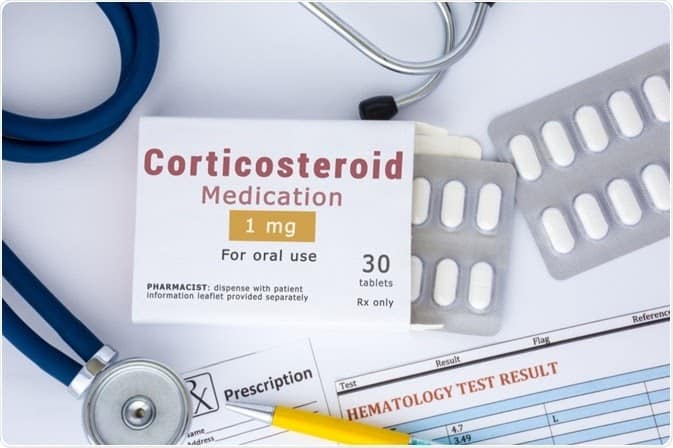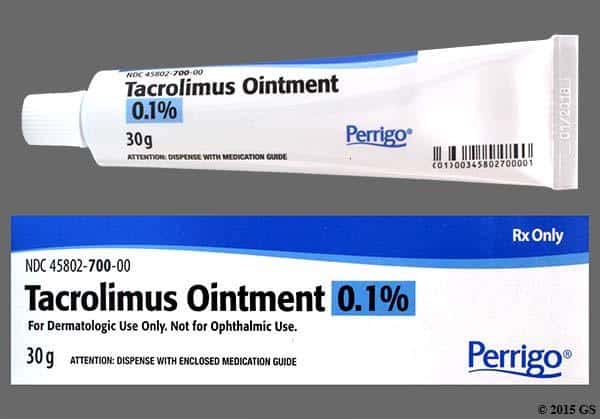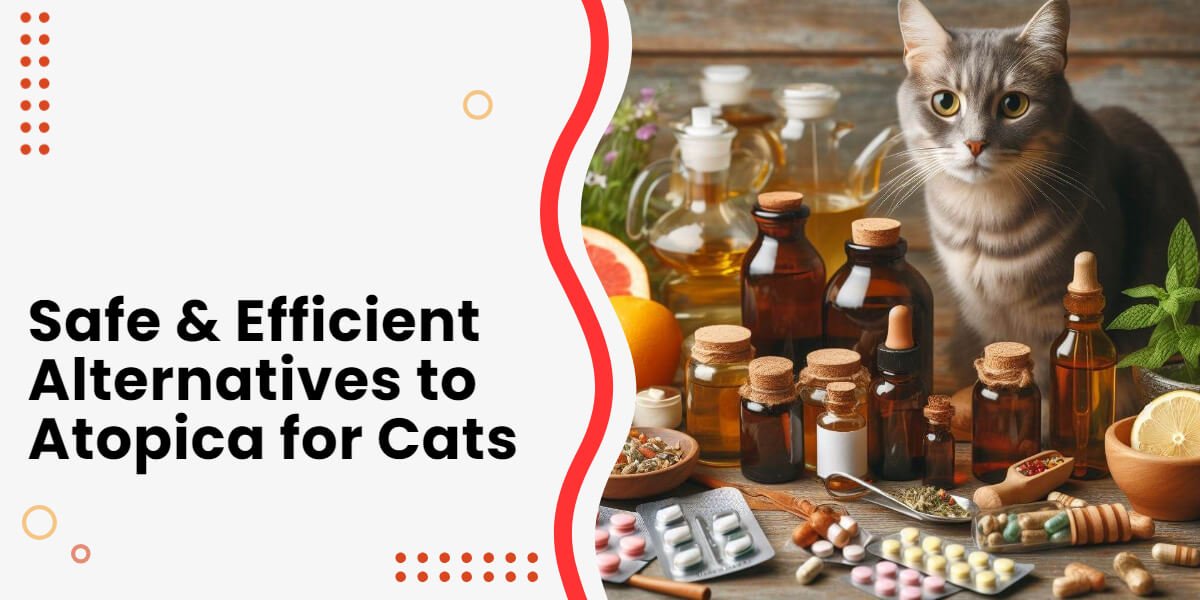If you’re a cat owner, you might have stumbled upon the term “allergic dermatitis,” a common skin woe among our feline friends. It’s a sneaky condition triggered by allergies, causing troublesome skin issues. Diagnosing it can be quite the puzzle, with only a small percentage of cats getting diagnosed and treated by veterinary dermatologists.
In this post, we’re diving into the world of alternatives to Atopica, a go-to medication for allergic dermatitis in cats. But let’s peel back the layers: these furry companions react uniquely to allergens like pollen, moulds, and dust mites, manifesting in skin inflammation rather than watery eyes or sneezes like us humans.
Atopica steps in as a solution, but it’s a slow burner, taking around two weeks to kick in and potentially up to four to six weeks to manage skin conditions. The environmental setting, whether indoor or outdoor, can also amp up their symptoms.
It’s a tricky scenario, with only a fraction of cats diagnosed and treated for this condition by specialists. So, let’s unravel the mystery surrounding Atopica and explore alternative avenues to ease your cat’s allergic dermatitis!
Table of Contents
Safe And Efficient Alternatives to Atopica for Cats
1. Corticosteroids

Corticosteroids are synthetic and include prednisone, prednisolone, dexamethasone, and triamcinolone. They work by binding to the glucocorticoid receptor, which up-regulates the expression of anti-inflammatory proteins, and represses pro-inflammatory proteins.
Corticosteroids include oral medicines (given by mouth), medicine that is delivered directly into a vein (intravenously or IV), muscle (intramuscularly), and medications in spray form to reduce inflammation and itching. When steroids are given, there might be some side effects (short-term and long-term) such as an increase in hunger, increase in thirst, calcium deposits (calcinosis cutis), and loss of energy.
2. Antihistamines
Antihistamines like Benadryl can be used. They work best as a preventive measure before the cat is exposed to the allergen. Unfortunately, there is no current antihistamine with proven efficacy in cats for the treatment of allergic skin disease.
“Cetirizine, a second-generation antihistamine, has given satisfactory results in the management of atopic dermatitis,” says a study published in the Canadian Veterinary Journal. Some side effects of antihistamines include lethargy, anorexia, diarrhea, and seizures.
Related: 5 safe alternatives to Lysine for cats
3. Natural Therapies
There have been many cases where natural therapies have worked to tackle atopic dermatitis. No specific therapy works on every single patient, but there are several options.
Some natural therapies are as follows:
- Omega 3 fatty acids – They help in reducing protein content and inflammation in the body. Fatty acids strengthen the skin and hair, and reinforce the epidermal membrane by controlling leukotriene and prostaglandin synthesis. They also preserve the natural composition of skin lipids and modulate the roles of lymphocytes.
- Herbs – Herbs are another great therapy that helps in reducing inflammation. They also aid in detoxifying. Some herbs such as gypsum, anemarrhena, burdock, and Rehmannia have shown anti-inflammatory and anti-pruritic activity. It is a natural alternative to corticosteroids.
- Homeopathics – Homeopathics have been used in combination with other various supplements to cure atopy. But the drawback is that they work less in cats than they do in humans. Some of them are useful, like sulfur, pulsatilla, Arsenicum album, Rhus tox and Hepar sulfur.
- Hygiene – One of the most important things that can be done to relieve an itchy pet is to bathe them using the right shampoo. Bathing periodically, sometimes every day, reduces allergens, scales and odours, and can cure minor secondary infections.
4. probiotics as a supplement
Probiotic supplements can be a helpful addition when treating cats with allergic dermatitis. Probiotics support healthy gut flora, which plays an important role in immune function. An impaired microbiome may contribute to overactive immune responses. Giving probiotic supplements or foods with added probiotics can help restore balance. Probiotics also reduce inflammation, which may provide additional relief for an itchy cat. Consult your vet for probiotic strain suggestions based on your cat’s needs.
Also Read: the top alternatives to Apoquel
5. Ointments and creams
Tacrolimus may be cheaper than Atopica, but topical medications alone may not be as effective in some dogs for the treatment of atopica. Topical corticosteroid ointments and creams, recommended for the treatment of moderate cases of pemphigus-induced canine skin lesions, can be beneficial on their own, but are prescribed in extreme cases in accordance with oral immunosuppressants.

6. Immunotherapy/allergy shots
Immunotherapy or allergy shots is an effective alternative treatment for allergic cats. While more time-consuming than medication, immunotherapy works by slowly desensitizing your cat’s immune system to the allergens causing their symptoms. It involves getting regular injections of customized allergen extracts from your veterinarian. Over time, this exposes the immune system to small amounts of allergens to reduce reactivity. It can take months to over a year to reach maximum efficacy.
7. Trying Novel Protein Diets
Switching your cat to a novel protein diet, with a protein source they have not eaten before, can help determine if food allergies or intolerances are contributing to their symptoms. Feeding an unusual protein like duck, venison, or kangaroo that your cat won’t have been exposed to can eliminate allergenic proteins. It may require trying a few different novel proteins. Your vet can provide or recommend prescription hypoallergenic diets. Give a novel protein 8-12 weeks to notice improvement.
Atopica Dosage for cats
The underlying dose of Atopica for cats is 3.2 mg/lb/day (7 mg/kg/day) as an everyday portion for at least 4 weeks or until the disappearance of clinical signs. Following this day-by-day treatment period might be too much for some cats.
The portion of Atopica for cats can be lessened by diminishing the recurrence of dosing to every other day or twice a week, which will still keep up the ideal remedial impact. At whatever point conceivable, Atopica for cats ought to be regulated on a steady timetable as to dinners and time of day. It should not be prescribed for more than once a day.
Recommended: Advantage Multi vs Revolution for cats
Precautions to be taken while using Atopica for cats:
- Try not to smoke or utilize smokeless tobacco while taking care of cats.
- If there is an emergency, look for clinical help promptly and give the package label to the doctor.
- Individuals who are sensitive to cyclosporine should keep out of contact with Atopica.

I’ve been living with cats since 2008 and I can confidently say I have more feline friends than humans lol. I currently live with 5 cats in different life stages; two of them are less than one year old, one is 2-ish years old and the oldest two are 9-ish years old. I’ve developed a strong bond with cats over the years and I’m eager to share my experience through this blog. You can learn more about my cats here.

